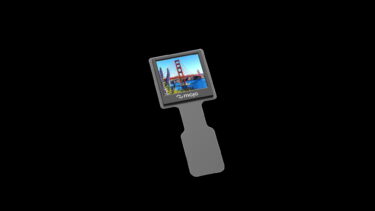Mojo Vision raises $43.5 million to develop advanced VR/AR displays

California-based startup Mojo Vision has closed its first round of investment to advance the development and commercialization of MicroLEDs.
MicroLEDs are being touted as the AR/VR display of the future due to their small size, high pixel density, brightness, and energy efficiency compared to conventional display technologies.
From Meta to Apple to Google, all the major companies are currently researching and developing MicroLED displays, and some have even acquired start-ups with the necessary expertise. However, it will probably be years before the screens are ready for the mass market and can be produced in large quantities.
MicroLEDs should not be confused with OLED microdisplays. The latter are already being used in the first commercial VR headsets, including Bigscreen Beyond and Apple Vision Pro.
A display technology with great potential
Mojo Vision has raised a total of $43.5 million for the development and commercialization of its MicroLEDs. This nearly doubles the investment announced in the spring.
The completed Series A round is led by New Enterprise Associates (NEA) and Khosla Ventures, as well as new investor Vanedge Capital. Other participating investors include Shanda Grab Ventures, Dolby Family Ventures, Advantech Capital, Liberty Global Ventures, Drew Perkins, Fusion Fund, Open Field Capital, and Knollwood Investment Fund.
“MicroLED displays are vital for high-performance, energy-efficient screens required in the next generation of AR/VR headsets, smart wearables, and even automotive applications,” says Vanedge Capital’s managing partner and new Mojo Vision board member Moe Kermani. “Mojo Vision’s pioneering advancements in core microLED technology, display design, and manufacturing, places them in a strong position to dominate the market.”
Mojo Vision's pivot to MicroLEDs
Mojo Vision originally worked AR contact lenses, but abandoned development in 2022 to focus on MicroLED displays instead.
For its contact lenses, the company developed a monochrome MicroLED display the size of a grain of sand with a pixel density of 14K. Mojo Vision is now working on more advanced RGB displays of this type, which it hopes to commercialize in the next few years. In the future, MicroLEDs with a brightness of more than one million nits and a pixel density of 28K are possible, the company said in the spring.
Another possible scenario for Mojo Vision is for a tech giant to acquire the startup. MicroLEDs are a key component for everyday AR glasses that companies like Meta, Apple, and Google are currently working on.
Note: Links to online stores in articles can be so-called affiliate links. If you buy through this link, MIXED receives a commission from the provider. For you the price does not change.